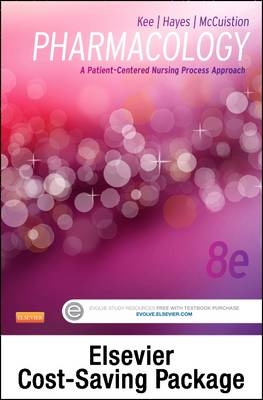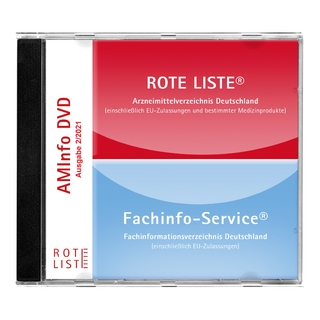
Elsevier Adaptive Learning (Access Card) and Elsevier Adaptive Quizzing (Access Card) for Pharmacology
Elsevier - Health Sciences Division (Hersteller)
978-0-323-35365-6 (ISBN)
- Titel ist leider vergriffen;
keine Neuauflage - Artikel merken
Please refer to the individual product pages for the duration of access to these products.
Elsevier Adaptive Learning:
An individual study schedule reduces cognitive workload and helps you become a more effective learner by automatically guiding the learning and review process.
The mobile app offers a seamless learning experience between your smartphone and the web with your memory profile maintained and managed in the cloud.
UNIQUE! Your memory strength is profiled at the course, chapter, and item level to identify personal learning and forgetting patterns.
UNIQUE! Material is re-presented just before you would naturally forget it to counteract memory decay.
A personalized learning pathway is established based on your learning profile, memory map, and time required to demonstrate information mastery.
The comprehensive student dashboard allows you to view your personal learning progress.
Elsevier Adaptive Quizzing:
In addition to detailed rationales for each question, select questions include interactive, multimedia resources such as illustrations, animations, videos, audio clips, summary tables, and study tips to help you master challenging material.
Alternate item format questions - including multiple-response, fill-in-the-blank, prioritizing, graphic options, chart/exhibit, video, audio, and hot spot - provide valuable licensure or certification exam preparation.
The comprehensive dashboard allows you to view your personal learning progress with summaries of your strengths, weaknesses, mastery levels, and normative data.
The engaging, easy-to-use interface ensures that you'll be able to navigate through the program with ease.
UNIQUE! Elsevier's trusted, market-leading content serves as the foundation for all questions, which are written, reviewed, and leveled by experienced nursing and/or health professions educators, item writers, and authors.
UNIQUE! Unfolding questions become progressively more complex as you advance to higher levels, incorporating concepts such as delegation, multi-system diseases, or complicating conditions to help you strengthen your critical thinking and clinical reasoning skills.
Confidence level indicators allow you to indicate your confidence when submitting answers, providing valuable insight into areas where you might require further study.
UNIQUE! Practice in Study Mode, which provides immediate feedback, or in Exam Mode where the quiz is timed and results are summarized at the end.
Multiple mastery levels for each chapter allow you to progress from one level to the next based on your performance.
UNIQUE! Essential test-taking tips and strategies help you learn how to successfully dissect and tackle different question types and improve test-taking skills for both course exams and the licensure or certification examination.
Unit I: Introduction to Pharmacology 1. Drug Action: Pharmaceutic, Pharmacokinetic, and Pharmacodynamic Phases 2. The Drug Approval Process 3. Cultural and Pharmacogenetic Considerations 4. Drug Interactions and Over-the-Counter Drugs 5. Drugs of Abuse 6. Herbal Therapies 7. Pediatric Pharmacology 8. Geriatric Pharmacology 9. Collaboration in Community Settings NEW QSEN focus! 10. The Role of the Nurse in Drug Research
Unit II: A Nurse's Perspective of Pharmacology 11. The Nursing Process in Patient-Centered Pharmacotherapy NEW QSEN focus! 12. Safety and Quality in Pharmacotherapy NEW QSEN focus! 13. Medication Administration
Unit III: Drug Calculations 14. Medications and Calculations Section 14A: Systems of Measurement with Conversion Section 14B: Methods for Calculation Section 14C: Calculations of Oral Dosages Section 14D: Calculations of Injectable Dosages Section 14E: Calculations of Intravenous Fluids Section 14F: Pediatric Drug Calculations
Unit IV: Nutrition and Electrolytes 15. Vitamin and Mineral Replacement 16. Fluid and Electrolyte Replacement 17. Nutritional Support
Unit V: Autonomic Nervous System Agents 18. Adrenergic Agonists and Adrenergic Blockers 19. Cholinergic Agonists and Anticholinergics
Unit VI: Neurologic and Neuromuscular Agents 20. Central Nervous System Stimulants 21. Central Nervous System Depressants 22. Anticonvulsants 23. Drugs for Neurological Disorders: Parkinsonism and Alzheimer's Disease 24. Drugs for Neuromuscular Disorders: Myasthenia Gravis, Multiple Sclerosis, and Muscle Spasms
Unit VII: Pain and Inflammation Management Agents 25. Antiinflammatory Drugs 26. Nonopioid and Opioid Analgesics
Unit VIII: Psychiatric Agents 27. Antipsychotics and Anxiolytics 28. Antidepressants and Mood Stabilizers
Unit IX: Antibacterial and Antiinfective Agents 29. Penicillins and Cephalosporins 30. Macrolides, Tetracyclines, Aminoglycosides, and Fluoroquinolones 31. Sulfonamides
Unit X: Additional Antiinfective Agents 32. Antituberculars, Antifungals, Peptides, and Metronidazole 33. Antivirals, Antimalarials, and Anthelmintics 34. Drugs for Urinary Tract Disorders
Unit XI: Immunologic Agents 35. HIV- and AIDS-Related Drugs 36. Vaccines
Unit XII: Antineoplastic Agents 37. Anticancer Drugs 38. Targeted Therapies to Treat Cancer 39. Biologic Response Modifiers
Unit XIII: Respiratory Agents 40. Drugs for Upper Respiratory Disorders 41. Drugs for Lower Respiratory Disorders
Unit XIV: Cardiovascular Agents 42. Cardiac Glycosides, Antianginals, and Antidysrhythmics 43. Diuretics 44. Antihypertensives 45. Anticoagulants, Antiplatelets, and Thrombolytics 46. Antihyperlipidemics and Peripheral Vasodilators
Unit XV: Gastrointestinal Agents 47. Drugs for Gastrointestinal Tract Disorders 48. Antiulcer Drugs
Unit XVI: Eye, Ear, and Skin Agents 49. Drugs for Eye and Ear Disorders 50. Drugs for Dermatologic Disorders
Unit XVII: Endocrine Agents 51. Endocrine Drugs: Drugs for Pituitary, Thyroid, Parathyroid, and Adrenal Disorders 52. Antidiabetics
Unit XVIII: Reproductive and Gender-Related Agents 53. Female Reproductive Cycle I: Pregnancy and Preterm Labor Drugs 54. Female Reproductive Cycle II: Labor, Delivery, and Preterm Neonatal Drugs 55. Postpartum and Newborn Drugs 56. Drugs for Women's Reproductive Health and Menopause 57. Drugs for Men's Health and Reproductive Disorders 58. Drugs for Disorders in Women's Health, Infertility, and Sexually Transmitted Infections
Unit XIX: Emergency Agents 59. Adult and Pediatric Emergency Drugs
Appendices A: Therapeutic Drug Monitoring B: Potential Weapons of Bioterrorism References
| Erscheint lt. Verlag | 1.10.2014 |
|---|---|
| Verlagsort | Philadelphia |
| Sprache | englisch |
| Themenwelt | Medizin / Pharmazie ► Medizinische Fachgebiete ► Pharmakologie / Pharmakotherapie |
| Medizin / Pharmazie ► Pflege | |
| ISBN-10 | 0-323-35365-7 / 0323353657 |
| ISBN-13 | 978-0-323-35365-6 / 9780323353656 |
| Zustand | Neuware |
| Haben Sie eine Frage zum Produkt? |
aus dem Bereich
